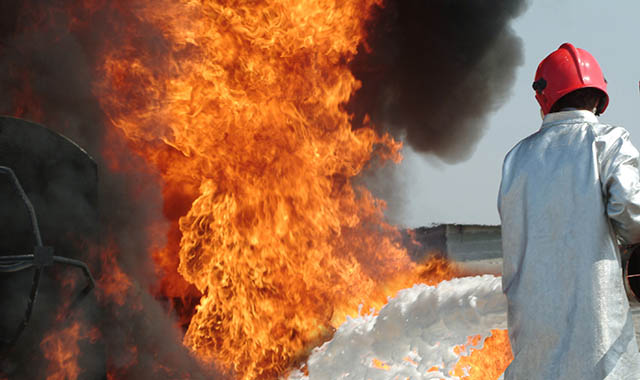Evaluating Firefighting Foams for PFAS Contaminants

Per- and polyfluoroalkyl substances (PFAS) are among the most widespread and persistent environmental pollutants. In recent years, PFAS has come under wider scrutiny due to its potential risks to human health and the environment. With more than 5,000 different compounds, such as ammonium perfluorooctanoate (PFOA) and perfluorooctane sulfonate (PFOS), PFAS has been used in a variety of industrial and consumer applications, including firefighting foams.
An analysis of U.S. Environmental Protection Agency (EPA) monitoring data reported high levels of PFAS in groundwater and surface water at military bases and airports where the foam was used in training exercises. There is a need to find replacement firefighting foams, but the challenge is that these foams must meet military specifications for fire suppression while also meeting the required standards of extinguishment and burn-back.
Several replacement foams that meet these standards are currently available, but they still have trace quantities of PFOS and PFOA. By combining engineering and chemical solutions, it is expected that one or more of these replacements could be modified to meet standards for EPA and the U.S. Department of Defense (DoD), allowing the U.S. military to switch to a more environmentally friendly firefighting agent.
Battelle researchers have embarked on a project to validate firefighting foams for DoD. The research is funded by the Environmental Security Technology Certification Program (ESTCP), under their initiatives PFAS research.
Led by Battelle Principal Investigator Satya Chauhan, Ph.D., the project will determine if compressed air foam or ultra-high pressure systems that are currently being used for improving firefighting at military bases will meet these standards. Battelle is contacting developers of advanced, fluorine-free foams to performing bench- and full-scale testing on their products.
“Battelle would particularly like to collaborate with developers of novel fluorine-free firefighting foams that are at a technology readiness level of at least three,” said Satya.
Technology readiness levels (TRLs) are a method for estimating the maturity of technologies during the acquisition phase of a program. Level three means that a proof of concept has been demonstrated – either analytically or experimentally.
He said he hopes the project can obtain as many suitable samples for testing as is possible.
The completion of this project will enable immediate implementation of the successful foams DoD-wide, helping to meet the National Defense Authorization Act (NDAA) passed by Congress in 2017 that requires the military look into foam alternatives that do not contain PFAS chemicals. Additionally, this validation will greatly help civil aviation reduce its environmental impact through use of fluorine-free alternatives that meet or exceed the performance of currently used fire suppressants.
Battelle is focused on bringing science-based solutions to address the country’s growing PFAS concerns. We possess deep subject matter expertise and are accredited for more PFAS analytes/matrices than any other U.S. lab, making us uniquely positioned to take on this project. Learn more about Battelle’s capabilities specific to PFAS.
BATTELLE UPDATES
Receive updates from Battelle for an all-access pass to the incredible work of Battelle researchers.